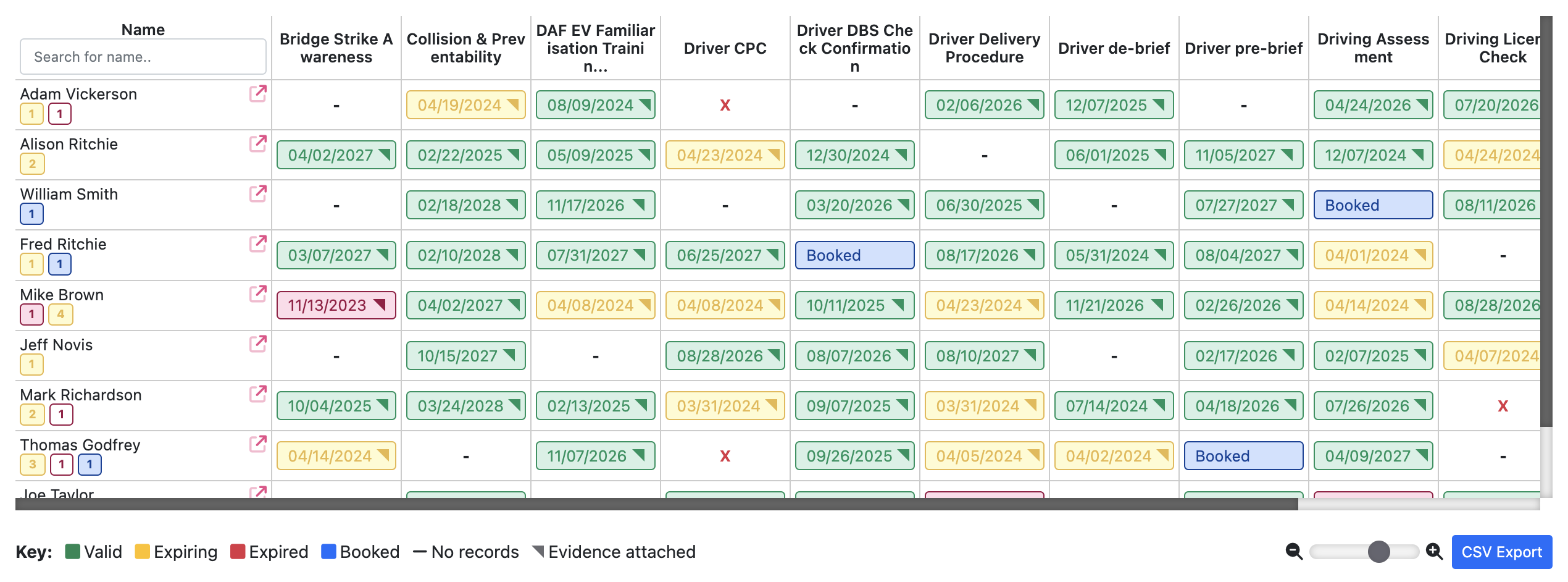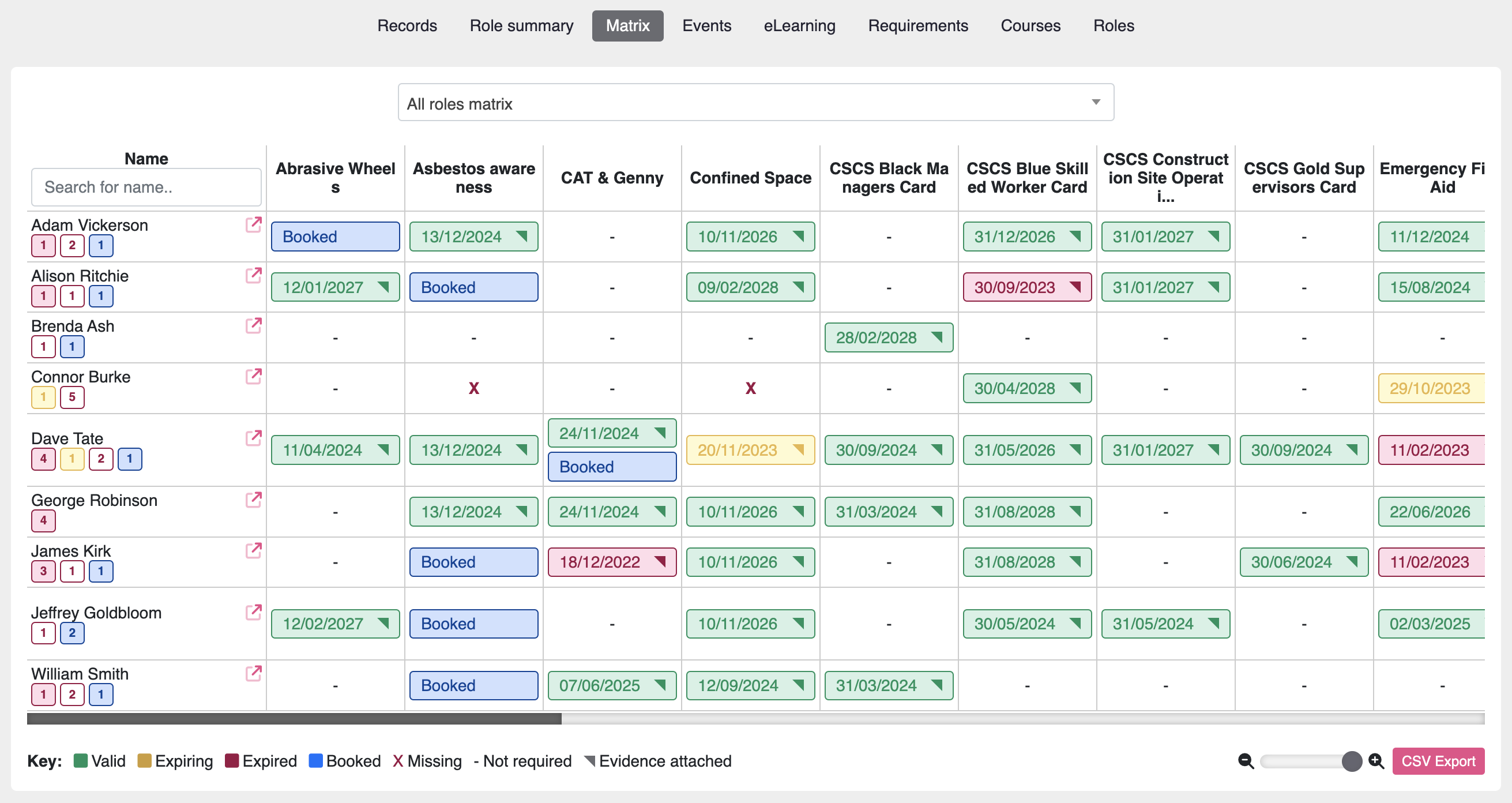A skills matrix is a visual representation of the skills and knowledge that employees have, as well as the skills and knowledge that they need to perform their jobs effectively. It is a valuable tool for workforce development and compliance, as it can help organisations to:
- Identify training needs and gaps
- Develop and deliver targeted training programs
- Track employee progress and development
- Ensure that employees are qualified to perform their jobs safely and effectively
A skills matrices can be used in a variety of industries and settings, including healthcare, manufacturing, construction, and transportation. They are also essential for organisations that are subject to regulatory compliance requirements, such as those in the financial services and healthcare industries.
Benefits of using a skills matrix
There are many benefits to using a skills matrix, including:
- Improved workforce performance: By identifying and addressing training needs, skills matrices can help to improve employee performance and productivity.
- Increased employee engagement: Skills matrices can help employees to see their own development path and identify areas where they can improve. This can lead to increased employee engagement and motivation.
- Reduced risk: Skills matrices can help to ensure that employees are qualified to perform their jobs safely and effectively. This can help to reduce the risk of accidents, incidents, and compliance violations.
- Improved compliance: Skills matrices can help organisations to comply with regulatory requirements, such as those related to employee training and qualifications.
How to create a skills matrix
Creating a skills matrix is relatively straightforward. The first step is to identify the skills and knowledge that are required for each job role in the organisation. This can be done by conducting a job analysis or by interviewing job incumbents and supervisors.
Once the required skills and knowledge have been identified, they can be listed in a table or spreadsheet. The rows of the table should represent the different job roles in the organisation, and the columns should represent the different skills and knowledge required for each job role.
The next step is to assess the skills and knowledge of each employee. This can be done through a variety of methods, such as employee self-assessment, performance reviews, and skills assessments.
Once the skills and knowledge of each employee have been assessed, the information can be entered into the skills matrix. This will give you a clear overview of the skills and knowledge that your employees have, as well as the skills and knowledge that they need to perform their jobs effectively.
Specialist software simplifies the whole process.
Using a skills matrix for workforce development
Skills matrices can be used to support a variety of workforce development initiatives, including:
- Identifying training needs: Skills matrices can be used to identify the skills and knowledge that employees need to develop in order to perform their jobs effectively. This information can then be used to develop targeted training programs.
- Developing and delivering training programs: Skills matrices can be used to develop training programs that are tailored to the specific needs of employees. Skills matrices can also be used to track employee progress and development during training.
- Ensuring that employees are qualified to perform their jobs: Skills matrices can be used to ensure that employees have the skills and knowledge necessary to perform their jobs safely and effectively. This can help to reduce the risk of accidents, incidents, and compliance violations.
Using a skills matrix for compliance
Skills matrices can also be used to support compliance with regulatory requirements. For example, organisations in the financial services and healthcare industries are often subject to regulations that require employees to have certain training and qualifications. Skills matrices can be used to ensure that all employees meet these requirements.
Further reading:
https://en.wikipedia.org/wiki/Skills_management
John is our co-founder and is responsible for software design and development and loves helping people solve problems using innovative software.


